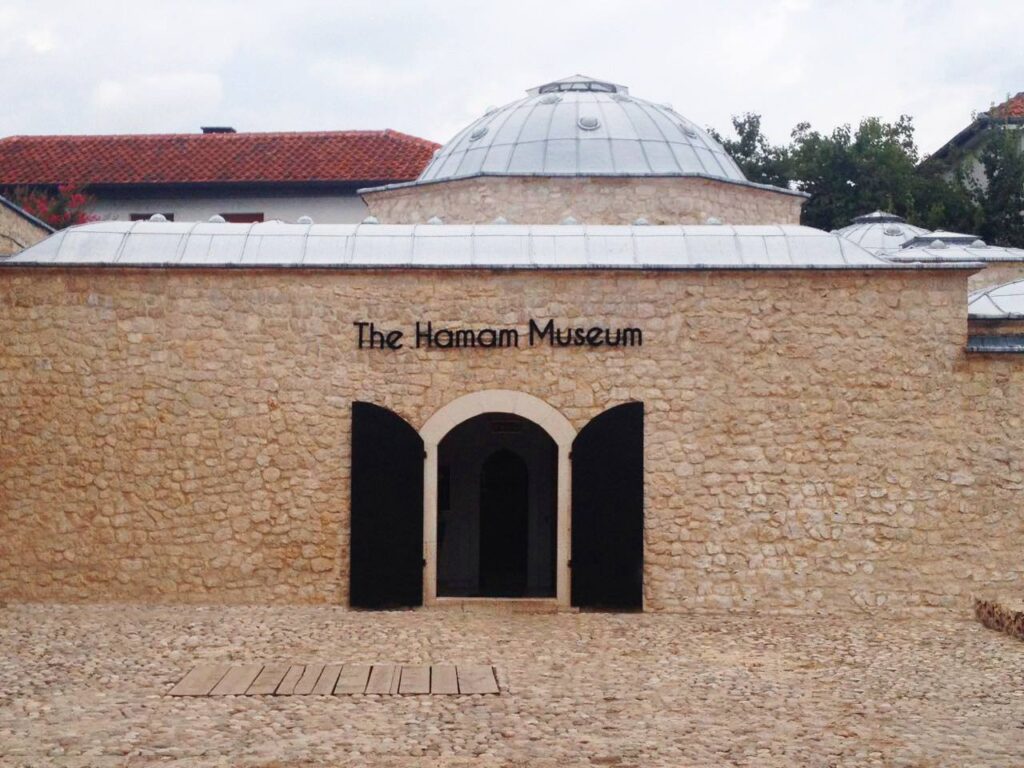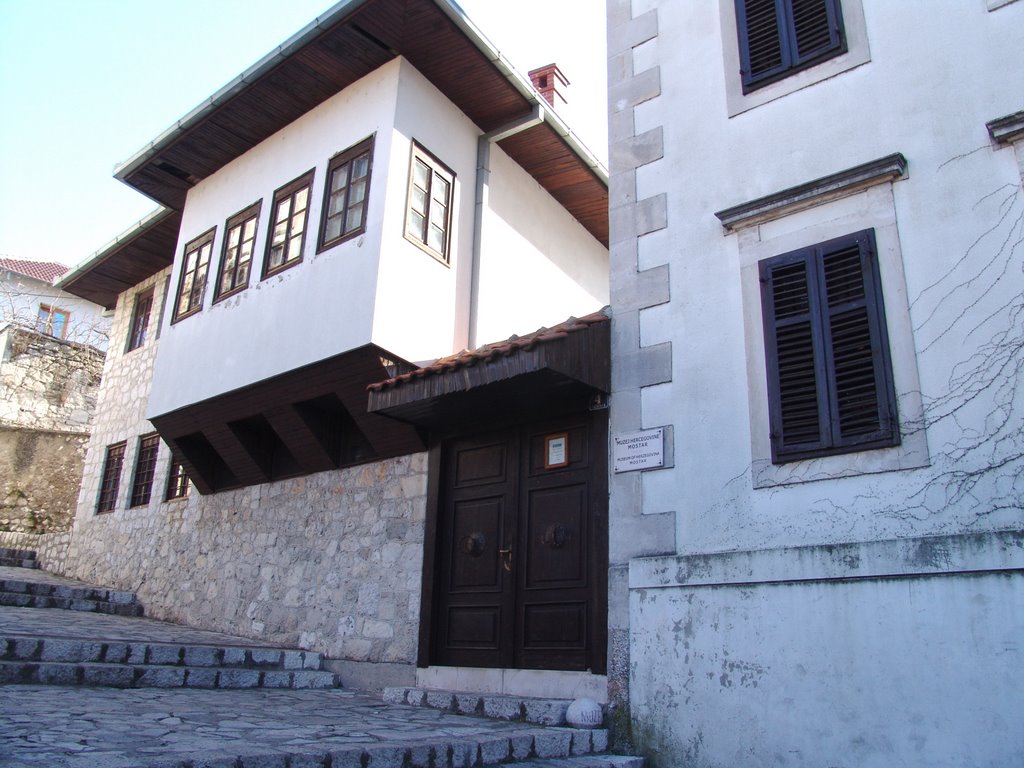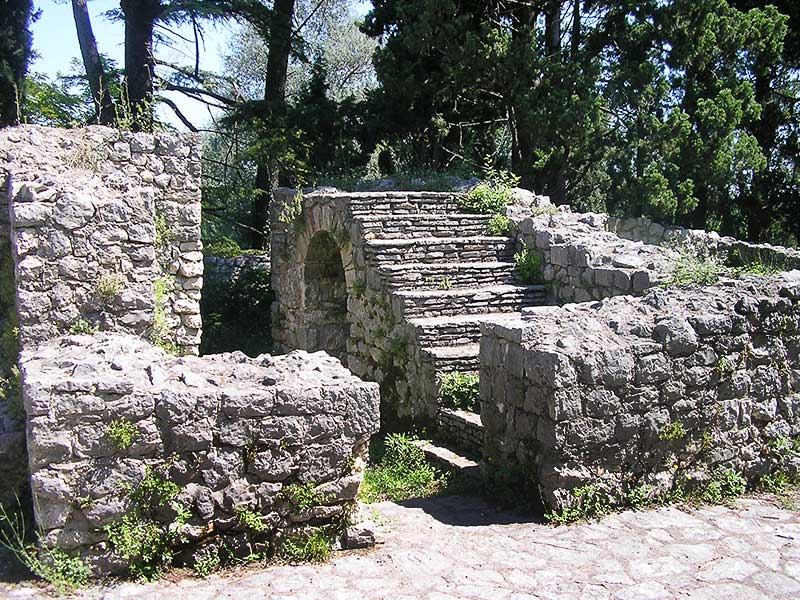Culture and Heritage
Welcome to the Herzegovina Wine Route, where stunning landscapes, unique culture, and world-class wines combine to offer a memorable experience for wine and culture enthusiasts alike.
This picturesque region showcases the best of Bosnia and Herzegovina, from the breathtaking views in Mostar to the historic charm of Trebinje, Ljubuški with the oldest museum in Bosnia and Herzegovina, religious and pilgrimage sites, and UNESCO sites like the Old Bridge and Radimlja necropolis.
The Herzegovina Wine Route is home to a vibrant wine and religious heritage, with iconic places to explore such as the pilgrimage site in Medjugorje, the Tekke in Blagaj, and the monasteries around Trebinje. Other highlights include the Tvrdos Monastery, the Rabi Moša Danon site in Stolac, and the numerous vineyards that dot the landscape. Whether you’re looking to explore the region’s spiritual side or its winemaking traditions, the Herzegovina Wine Route offers a unique insight into the culture and history of the region.
HWR
Culture and Heritage

Tara and Halebija Towers
The Old Bridge, elegantly spanning the Neretva River, is flanked by two majestic towers that serve as architectural support and watchful guardians. On the east bank stands the semi-circular Tara Tower, once an Ottoman ammunition depot and now housing the Museum of the Old Bridge. Opposite on the west side, the Halebija tower served as a prison on its lower floors and as small barracks and a lookout post on its upper floors. Just beyond the Tara Tower, nestled on the left bank of the river, lies the Herceguša Tower, a remarkable structure built in the early 15th century during the reign of Herceg Stjepan Vukčić Kosača.
The towers can be visited from Tuesday – Sunday, from 10 am until 6pm

Tekke in Stolac
Tekke in Stolac is not only a mystical temple located near the river Bregava, but also a center for research and promotion of spiritual and cultural heritage in Bosnia and Herzegovina. It was raised by sheikh Halil Hulusi Nakišendi el Bosnevi.

The Hamam Museum
The “Hamam Museum” in Mostar is an authentic cultural monument, which takes visitors back to a distant past to witnes the most beautiful stories of the former way of living. The Hamam was built in the late 16th century, and represents the only preserved hamam in Mostar. It was built in the classical Ottoman style, with a modest exterior, built next to the town square, where a mosque and a public kitchen are in the close proximity to the hamam. The Hamam was visited by women and men regardless of their religious affiliation, during the visit of the “Hamam Museum” visitor experiences the true historical picture.
Opening times: Tuesday – Sunday from 10:00 am to 6:00 pm

The Herzegovina Museum
For those who wish to get acquainted with the history of Mostar and Herzegovina, this small but significant museum is a must. The museum is located in the rooms of the house where the former head of the Yugoslav Government Džemal Bijedić lived. The building, constructed in the Austrian-Hungarian period, is an example of a successful mixture of the style of Austrian dwellings with architectural features of Oriental residences. The museum itself possesses a rich collection of archaeological and ethnographic findings, as well as utmost valuable documents supplying information on the various periods of the city of Mostar and of the whole of the Herzegovina region. Inside, there are areas where original furniture and objects of daily use belonging to past city and country times, can be admired.
Opening times: Monday- Friday from 8:00 am to 4:00 pm

The Hub of Fine Arts
The Hub of Fine Arts is a unique intersection of modernist stylistic expression and the greatest artists of the first half of the twentieth century. More than 100 exhibits offer excellent insight into the constants and revolutionary aspects of these artworks, revealing all the uniqueness of an age and this potential is the reference point for the creation of a museum exhibit concept. The Hub of Fine Arts offers a multidimensional art and culture experience to visitors of all ages, and, with the help of the latest museum tools, educates them on the creative process of art and recent cultural currents. As a unique art space in the region, The Hub of Fine Arts will showcase its uniqueness through quality art exhibitions focusing on the works of international masters of modernism.

The Mak Dizdar House
Mak Dizdar, born on October 17, 1917, in Stolac, is considered one of the greatest poets of Bosnia and Herzegovina. He spent most of his life in Sarajevo, where he passed away on the 14th of July, 1971. In 1966, he published the poetry book “Stone Sleeper,” which is regarded as the pinnacle of his entire literary work and one of the foundational pieces of literature in Bosnia and Herzegovina. Towards the end of his life, Dizdar wished to return to his hometown, but his desire was never fulfilled. However, in 1997, on the occasion of the 90th anniversary of his birth, the descendants of Mak Dizdar, gathered around the Mak Dizdar Foundation, decided to posthumously fulfill his wish and build the Mak House, a museum and gallery center dedicated to his life and work. The Mak House is not the birthplace or grave of Mak Dizdar; rather, it is conceived as something more subtle: a place where Mak’s spirit resides, living through his manuscripts, books, notes, as well as every poem and word he wrote. Moreover, due to Mak’s connection with the stećak, the Mak House also serves as a home for the art of the stećak. This includes not only scholarly works about the stećak and medieval Bosnia in the library of the Mak House but also art inspired by these unique medieval standing stones.

Antique Villa Mogorjelo
Mogorjelo is one of the most important monuments of the Roman era in Bosnia and Herzegovina and belongs to the most beautiful buildings of late antique architecture. Mogorjelo supplied the Roman city of Narona and probably served in the defense of the city and its surrounding, a dense grove of coastal trees (cypress) gives this monument a particularly beautiful frame. The building was excavated between 1889 and 1903, and in the following years it was conserved, being declared as a national monument in 2002.

Apparition Hill and the Blue Cross
Apparition Hill and the Blue Cross in Medjugorje hold profound spiritual significance for millions of pilgrims worldwide. Medjugorje is a renowned pilgrimage site where, since June 1981, six young visionaries have reported regular apparitions of the Virgin Mary. Apparition Hill, or Podbrdo, is the site where the first apparition allegedly occurred, drawing countless devotees seeking solace, healing, and spiritual renewal. On the other hand, the Blue Cross, situated at the base of Apparition Hill, has become a place of intense prayer and reflection, where visitors meditate on the sufferings of Christ and present their intentions to the Virgin Mary. Both sites have become symbols of hope and faith, attracting people from various backgrounds to seek divine encounters and experience the transformative power of Medjugorje’s spiritual atmosphere.

Antique Villa Mogorjelo
Mogorjelo is one of the most important monuments of the Roman era in Bosnia and Herzegovina and belongs to the most beautiful buildings of late antique architecture. Mogorjelo supplied the Roman city of Narona and probably served in the defense of the city and its surrounding, a dense grove of coastal trees (cypress) gives this monument a particularly beautiful frame. The building was excavated between 1889 and 1903, and in the following years it was conserved, being declared as a national monument in 2002.

Apparition Hill and the Blue Cross
Apparition Hill and the Blue Cross in Medjugorje hold profound spiritual significance for millions of pilgrims worldwide. Medjugorje is a renowned pilgrimage site where, since June 1981, six young visionaries have reported regular apparitions of the Virgin Mary. Apparition Hill, or Podbrdo, is the site where the first apparition allegedly occurred, drawing countless devotees seeking solace, healing, and spiritual renewal. On the other hand, the Blue Cross, situated at the base of Apparition Hill, has become a place of intense prayer and reflection, where visitors meditate on the sufferings of Christ and present their intentions to the Virgin Mary. Both sites have become symbols of hope and faith, attracting people from various backgrounds to seek divine encounters and experience the transformative power of Medjugorje’s spiritual atmosphere.

Archaeological site Gabela
Gabela is a national cultural monument of Bosnia and Herzegovina. Due to its strategic location, Gabela was also inhabited in Roman times, from which we have the remains of a brick factory and farm buildings on the outskirts of the town. Of the large number of medieval buildings, the remains of the old fort and a stone plaque with a large winged lion, the symbol of the Republic of Venice, are the most impressive to this day. Gabela was from the 15th to the 18th century a large trading center, but also an important strategic fortress on the Venetian-Turkish border. At one time it was known as the slave square. Various political and economic interests were competing for supremacy over Gabel. The Turks occupied it in 1477, and after several failed attempts in 1694, the Venetians occupied Gabela, then with the Peace of Požarevac in 1718, Gabela belonged to the Turks, and the Venetians demolished all the important buildings. Gabela is again under Turkish administration, but without its former power. During the Austro-Hungarian rule and the construction of the narrow-gauge railway, Gabela was a junction from Sarajevo to Dubrovnik and Metković. The Mexican scientist Roberto Salinas Price developed a hypothesis based on geographical information in the Iliad that the Trojan War was in the valley of the Neretva River, that is, that Gabela was Ilios, the capital of the state of Troy.